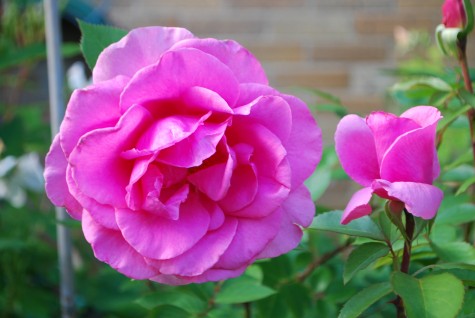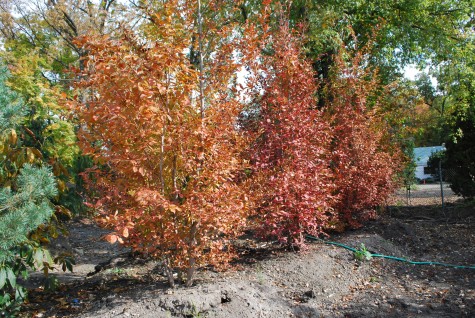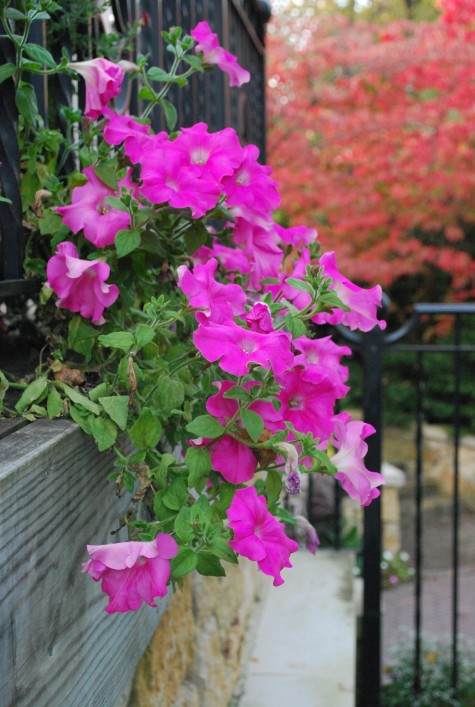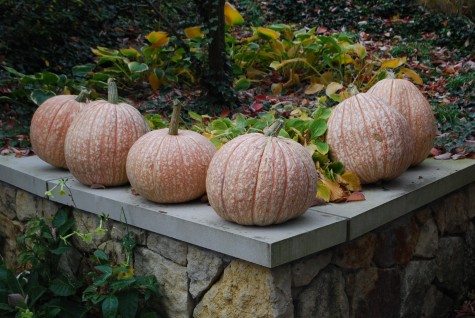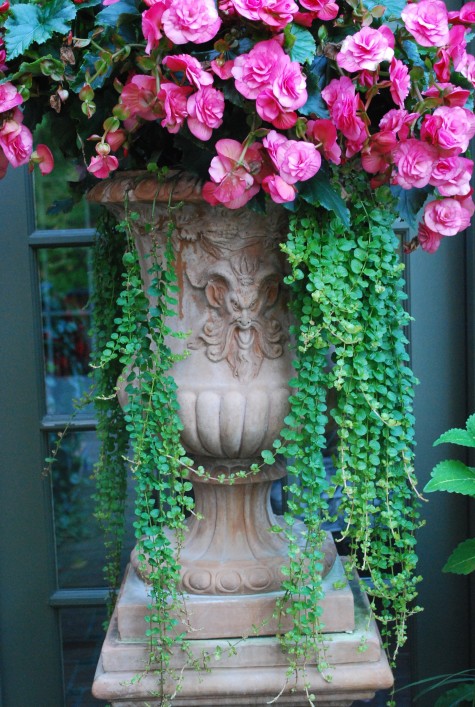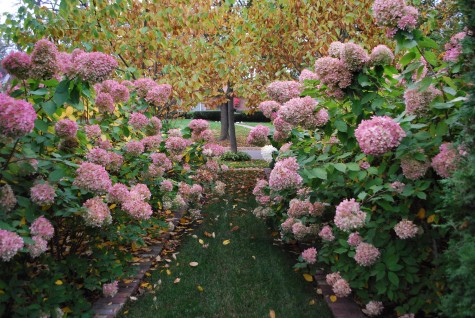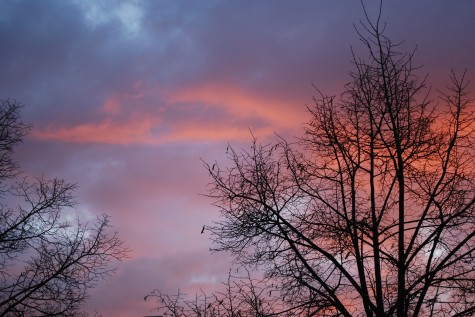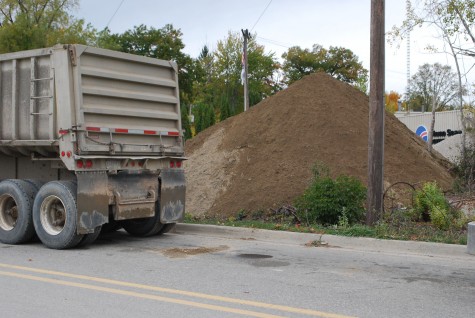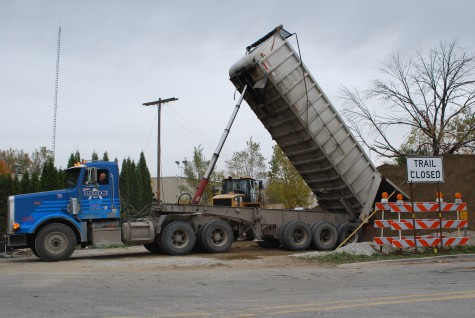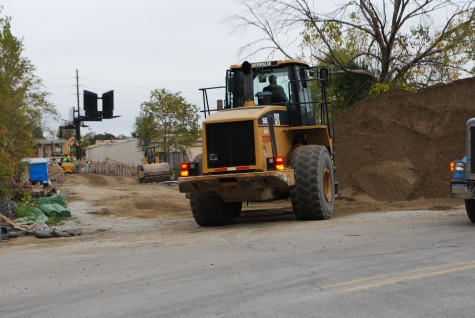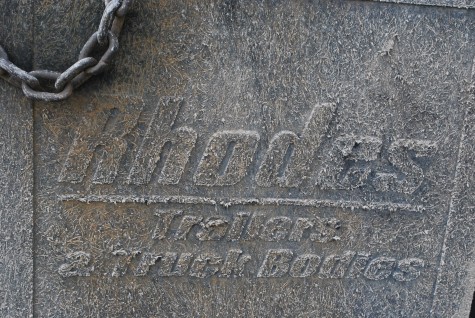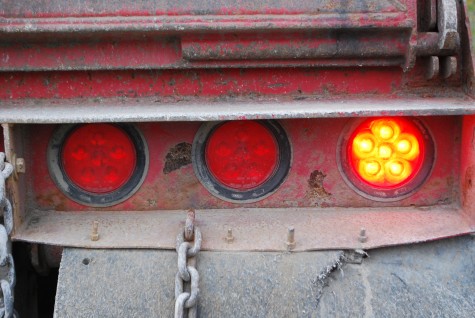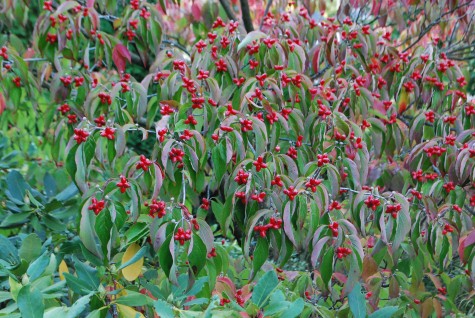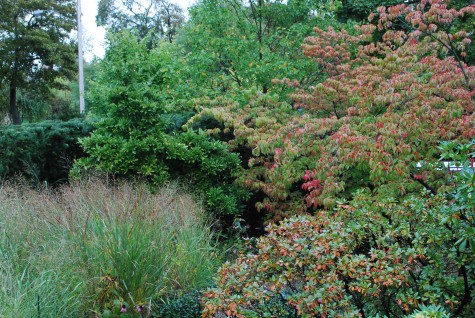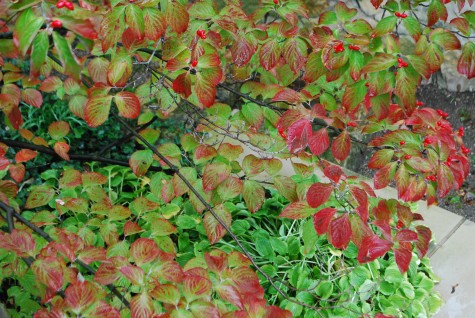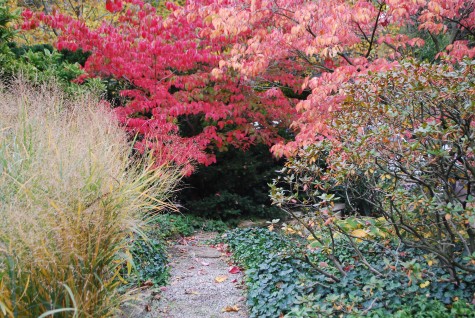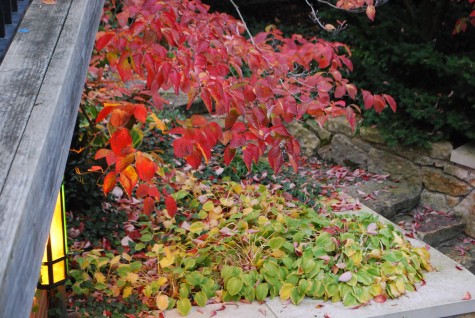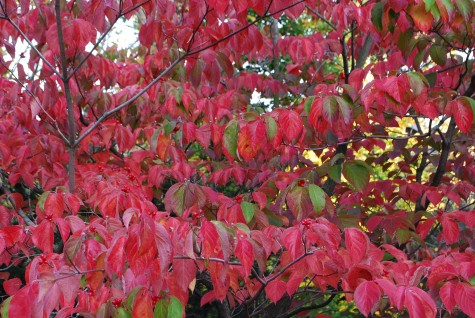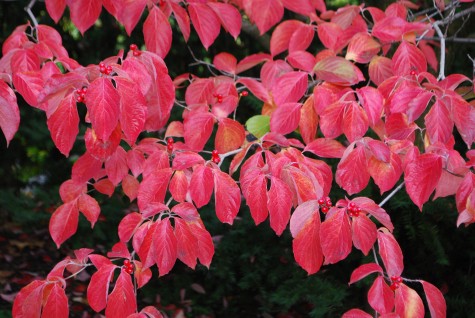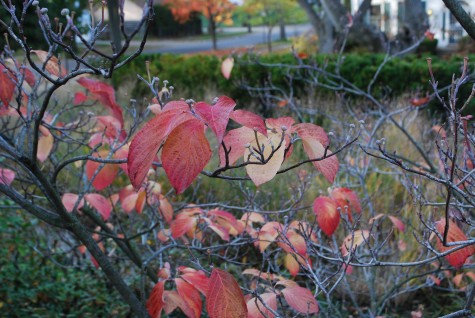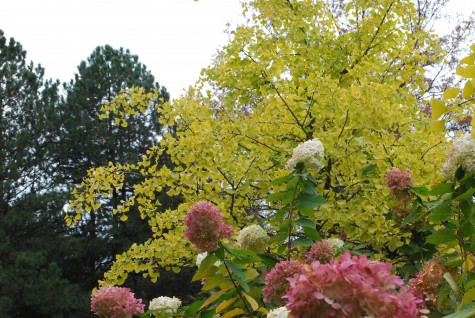 Ideal conditions for great fall color involve a season with decent soil moisture, warm days, and temps at 45 degrees or below at night. Ideal conditions- rare. Abruptly early freezing can interrupt the process by which leaves slowly stop producing chlorophyll; rather than a display in technicolor, we get a limited range of mud-brown and mud grey. This year, it is more than startling that we have not yet had a hard frost; it has been years since Halloween came and went before a killing frost. The night temperatures for the next 10 days look like they will hover in the low forties. We seem to be headed for great color. What is coloring up? Gingko leaves turn a gorgeous citron yellow in the fall; that color matures to a brilliantly clear golden yellow. But a gingko’s main claim to fall fame is about the drop. They drop most every leaf on the same day. Should you happen to be available that day, that drop is a happening.
Ideal conditions for great fall color involve a season with decent soil moisture, warm days, and temps at 45 degrees or below at night. Ideal conditions- rare. Abruptly early freezing can interrupt the process by which leaves slowly stop producing chlorophyll; rather than a display in technicolor, we get a limited range of mud-brown and mud grey. This year, it is more than startling that we have not yet had a hard frost; it has been years since Halloween came and went before a killing frost. The night temperatures for the next 10 days look like they will hover in the low forties. We seem to be headed for great color. What is coloring up? Gingko leaves turn a gorgeous citron yellow in the fall; that color matures to a brilliantly clear golden yellow. But a gingko’s main claim to fall fame is about the drop. They drop most every leaf on the same day. Should you happen to be available that day, that drop is a happening.
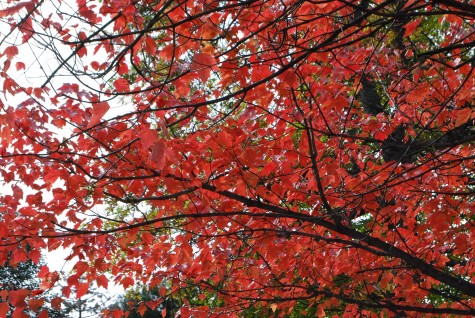 Red maples are aptly named for the intense red color of their fall leaves-but they can disappoint in a dry year. Should that red color be important to you, chose a named cultivar of acer rubrum especially bred for great fall color- like October Glory or Red Sunset. Maple leaves are large, and grow parallel to the ground. This makes the shade they cast particularly dense. But in the fall, the leaves are translucent; light shines through them. This brings that red fall color to life in a spectacular way.
Red maples are aptly named for the intense red color of their fall leaves-but they can disappoint in a dry year. Should that red color be important to you, chose a named cultivar of acer rubrum especially bred for great fall color- like October Glory or Red Sunset. Maple leaves are large, and grow parallel to the ground. This makes the shade they cast particularly dense. But in the fall, the leaves are translucent; light shines through them. This brings that red fall color to life in a spectacular way.
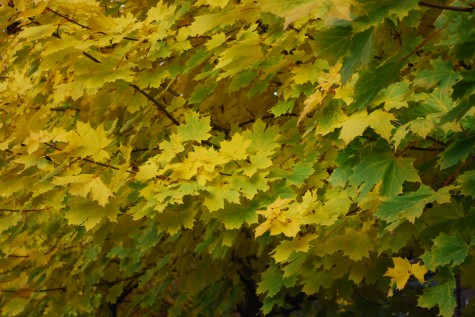 My Princeton Gold maples have an intensely gold fall color. The transition from green to yellow can take weeks. I have never had the inclination to dry flowers in a flower press, but I love pressing fall leaves-in every stage. Searching for my favorite fall leaf is not so different from shelling on a beach, or cutting the best garden flowers for the dinner table. Any gardener understands nature is a teacher, a resource that should be respected and protected- and a source from which to draw a good life.
My Princeton Gold maples have an intensely gold fall color. The transition from green to yellow can take weeks. I have never had the inclination to dry flowers in a flower press, but I love pressing fall leaves-in every stage. Searching for my favorite fall leaf is not so different from shelling on a beach, or cutting the best garden flowers for the dinner table. Any gardener understands nature is a teacher, a resource that should be respected and protected- and a source from which to draw a good life.
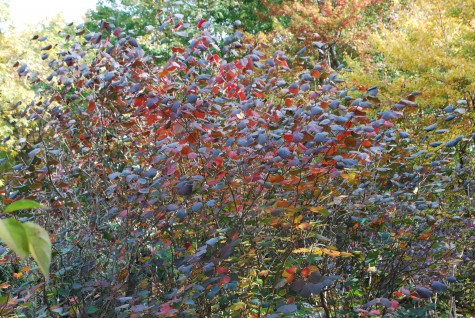 Disanthus Cercidifolius is a rare tree in my zone; native to China and Japan, they thrive in the Pacific northwest. This particular tree I saw just a week ago for the first time at Landscape Supply in Taylor. Wow. Related to witch hazel, this small growing tree has large heart-shaped leaves. However this tree comes into its own in the fall. Leaves turning purple, gold, orange-and finally red; Disanthus wrote the book on fall fireworks. Thriving in uniformly moist and acid soil not unlike what makes rhododendron happy-who would not have one if they could?
Disanthus Cercidifolius is a rare tree in my zone; native to China and Japan, they thrive in the Pacific northwest. This particular tree I saw just a week ago for the first time at Landscape Supply in Taylor. Wow. Related to witch hazel, this small growing tree has large heart-shaped leaves. However this tree comes into its own in the fall. Leaves turning purple, gold, orange-and finally red; Disanthus wrote the book on fall fireworks. Thriving in uniformly moist and acid soil not unlike what makes rhododendron happy-who would not have one if they could?
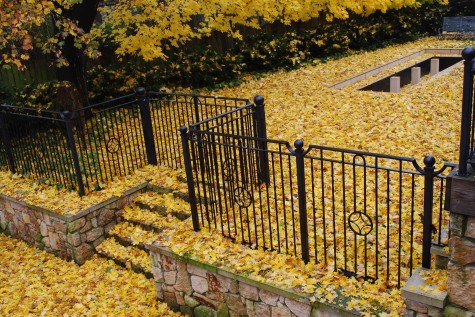 Unlike the regal Disanthus, my Norway maple is distinguished only by its age and size. This means that the sheer volume of fall leaves that will blanket my entire yard in yellow is newsworthy. This day-before I get to scooping them up-is a glorious day. I was lucky to get this picture before the Corgis got into the yard; they relish making a little ruckus running through these leaves.
Unlike the regal Disanthus, my Norway maple is distinguished only by its age and size. This means that the sheer volume of fall leaves that will blanket my entire yard in yellow is newsworthy. This day-before I get to scooping them up-is a glorious day. I was lucky to get this picture before the Corgis got into the yard; they relish making a little ruckus running through these leaves.
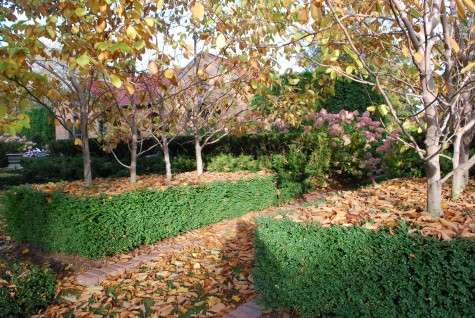 Magnolias have lusciously large leaves-but their fall color I would charitably describe as “tan”. The beauty of the fall leaf drop has everything to do with the boxwood tables underneath them. These drab fallen leaves are a kind of late season frosting on a series of shapes. The spring drop of their yellow petals is followed by a fall drop of their dehiscing leaves. There is a pattern, a order of events-the season changing. The fall color on the magnolias-not anything to celebrate.
Magnolias have lusciously large leaves-but their fall color I would charitably describe as “tan”. The beauty of the fall leaf drop has everything to do with the boxwood tables underneath them. These drab fallen leaves are a kind of late season frosting on a series of shapes. The spring drop of their yellow petals is followed by a fall drop of their dehiscing leaves. There is a pattern, a order of events-the season changing. The fall color on the magnolias-not anything to celebrate.
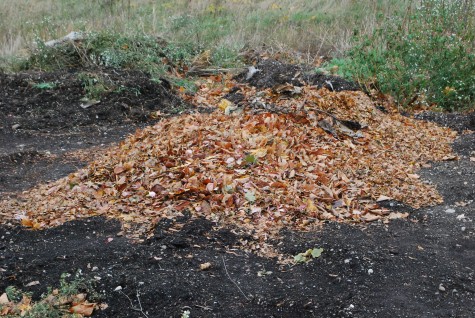 The body of leaves that fall on the properties we maintain-we collect them all. We compost them. Steve organizes the dispensation and decomposition of every scrap of organic matter we collect. We have at least 7 giant piles going as I speak-all of them are at different stages in the cooking process. Every leaf dropped from my giant Norway maple will be composted, and be returned to the soil.
The body of leaves that fall on the properties we maintain-we collect them all. We compost them. Steve organizes the dispensation and decomposition of every scrap of organic matter we collect. We have at least 7 giant piles going as I speak-all of them are at different stages in the cooking process. Every leaf dropped from my giant Norway maple will be composted, and be returned to the soil.
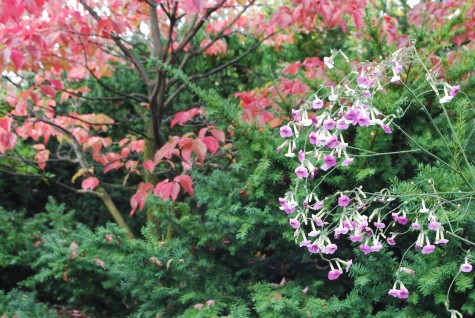 My Nicotiana Mutabilis is still thriving-it shrugs off the October cold. Its giant flat leaves are as green as my evergreens; this plant has no plan to shut down anytime soon. Each elongated leaf is still producing chlorophyll for all it is worth. Should you be looking for a plant that starts out strong, stays strong, and finishes very strong-consider this nicotiana.
My Nicotiana Mutabilis is still thriving-it shrugs off the October cold. Its giant flat leaves are as green as my evergreens; this plant has no plan to shut down anytime soon. Each elongated leaf is still producing chlorophyll for all it is worth. Should you be looking for a plant that starts out strong, stays strong, and finishes very strong-consider this nicotiana.
In the fall, the work is leavened with delight.
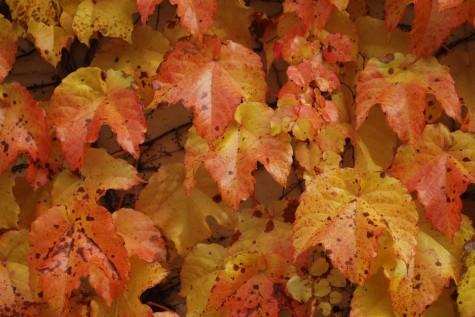
I have substantial walls enclosing the Detroit Garden Works property; those walls were in place in 1996. Many years ago, I planted Boston ivy on all of these walls. Parthenocissus Tricuspidata Vetcheii. Those walls today are uniformly and solidly and beautifully covered with the leaves of this vine. Those giant 3 lobed leaves are turning color rapidly-every leaf is different. Harmonic–the fall color on the Boston Ivy. In the fall, many of my thoughts revolve around the look of the leaves.
